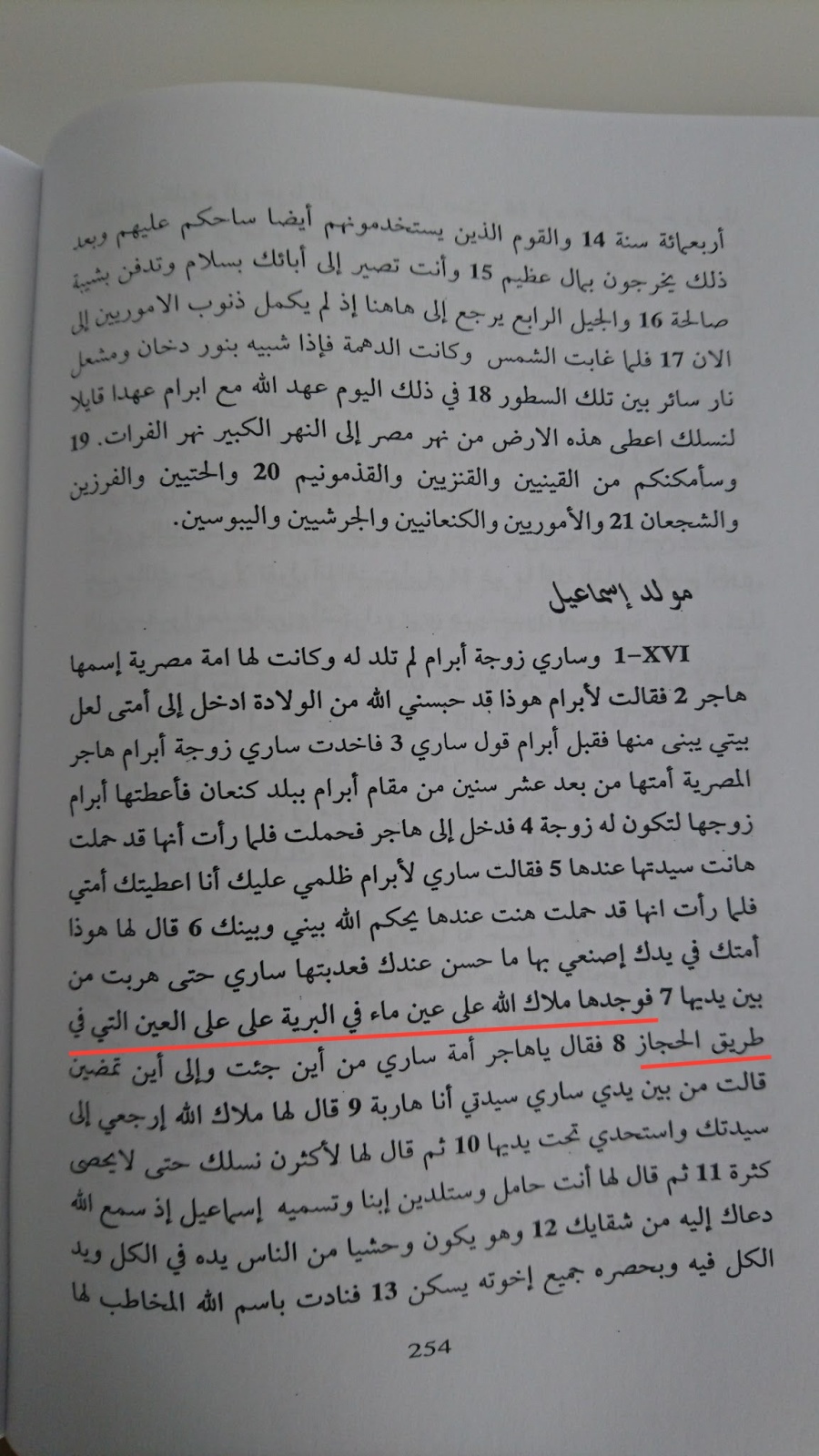In the story about the wife of patriach Abraham, Hagar, and his firstbon son, Ishmael, in the Torah in Genesis/Bereishit 16:7 it was mentioned about a place named Shur שֽׁוּר.
וַֽיִּמְצָאָ֞הּ מַלְאַ֧ךְ יְהוָ֛ה עַל־עֵ֥ין הַמַּ֖יִם בַּמִּדְבָּ֑ר עַל־הָעַ֖יִן בְּדֶ֥רֶךְ שֽׁוּר
An angel of the LORD found her by a spring of water in the wilderness, the spring on the road to Shur (JPS 1985)
According to Jewish and christian interpretation Shur was the desert
between the south of Canaan, where Hebron was situated, and Egypt.
Interestingly, Rabbi Saadia Gaon ben Yosef (882-942) or Saʻīd bin Yūsuf al-Fayyūmi in Arabic also known
by the acronym “Rasag” (who is considered one of the greatest Jewish
sage from the geonic era. An intellectual tower in the field of biblical
exegesis, Jewish philosophy, Hebrew language, prayer, and Halakha) in
his magnus opus arabic translation of the Torah Attarjamah Al’arabiyyah Attawrah الترجمة العربية للتوراة rendered Genesis 16:7 as follows:

فو جدها مالك اللّٰه على عين ماء في البرية على على التي في طريق الحجاز
My literal translation : “The Angel of Allah found her on a spring of water in the wilderness on the way in the Hijaz (Al Hijaz)”
To me this is remarkable discovery. Rasag did not mention Shur but Al Hijaz,
he seemed to confirm the origin of the zamzam well, a miraculously
generated source of water from God, which according to traditional
Islamic report began when Hagar and her infant son Ishmael was wandering
in the wilderness thirsty and desperately need for water. It was
then God sending his angel, Gabriel to help Hagar. Later then Ishmael
and his father Abraham rebuilt the Bayt Allah (“House of God”) called the Kaaba, a landmark building which Muslims around the world visit and face in prayer. The place which Rasag mention as Al-Hijaz is the region in the west of present-day Saudi Arabia where the holy city of Mecca in which the Kaaba is situated.

Rasag originally wrote his original Torah translation using Hebrew
scripts not Arabic (Judeo-arabic scripts). This
also has been bolstered by the fact that no texts of the
Arabic script have been found in any of the Genizah collections.
As Muslims at his time could not read Hebrew or Hebrew characters
this clearly indicates that Rasag wrote his translation of the Torah
with a Jewish
audience in mind, an assumption supported by Rasag own description of
his work. So There is little possibility that Rasag deliberately choose
the wording in order to fit Islamic audience as later jewish
commentator such as 12th century Abraham Ibn Ezra had been speculating.
More support that Rasag himself chose to refer to the Al -Hijaz region in his Torah translation can be found in his rendering of Genesis/Bereishit 10:30, in which he translates the locations Mesha מֵשָׁ֑א and Sephar סְפָ֖רָ as Mecca مكة and Medina المدينة.
Please refer to Rasag tarjamah text below:

No comments:
Post a Comment